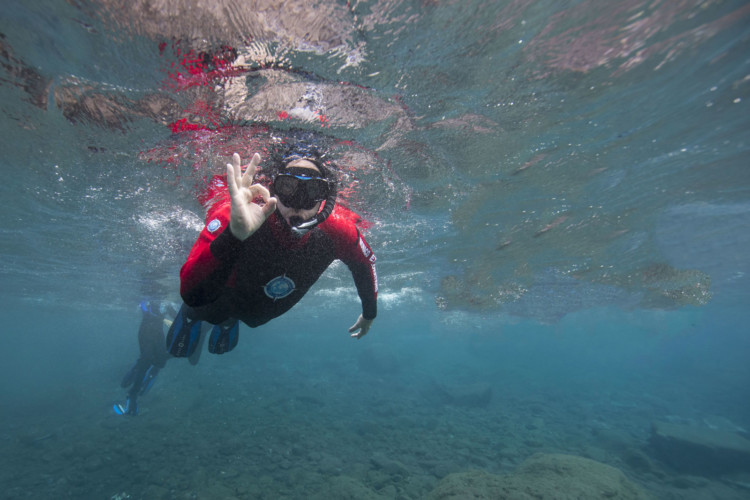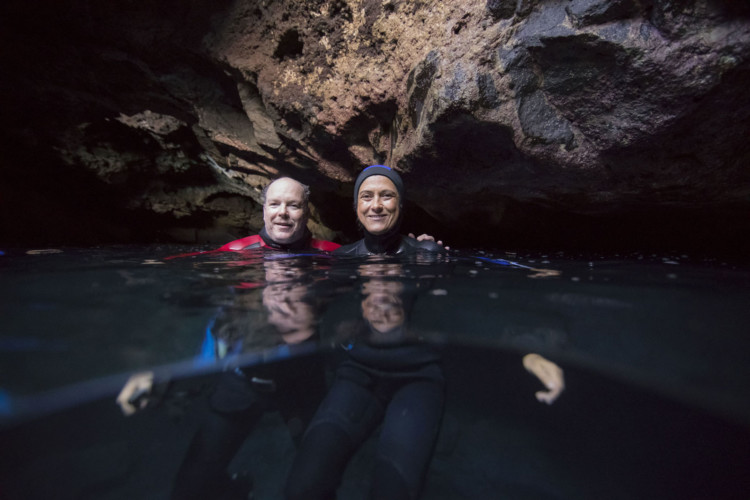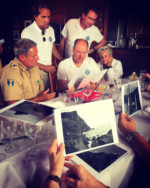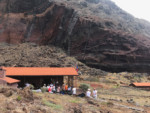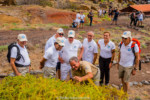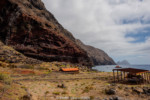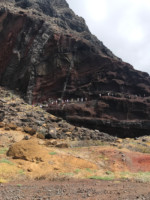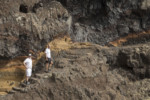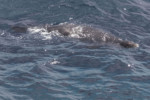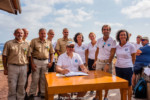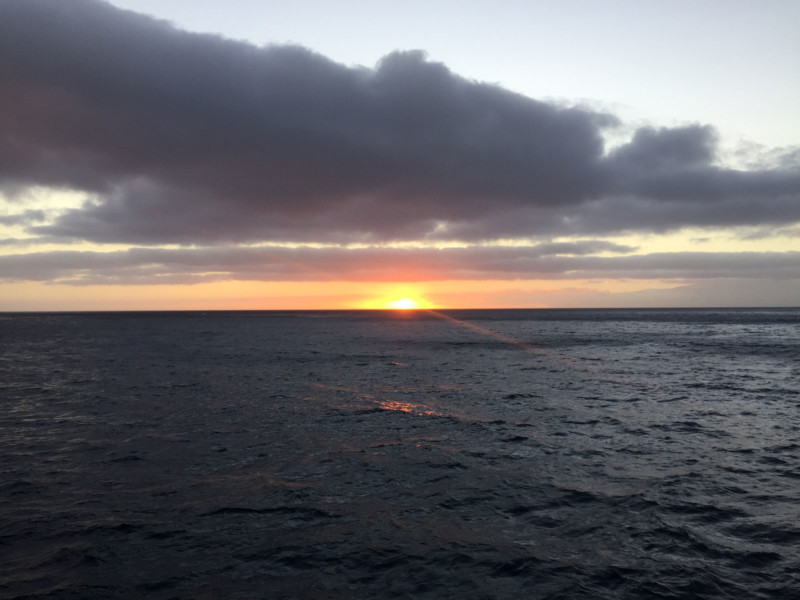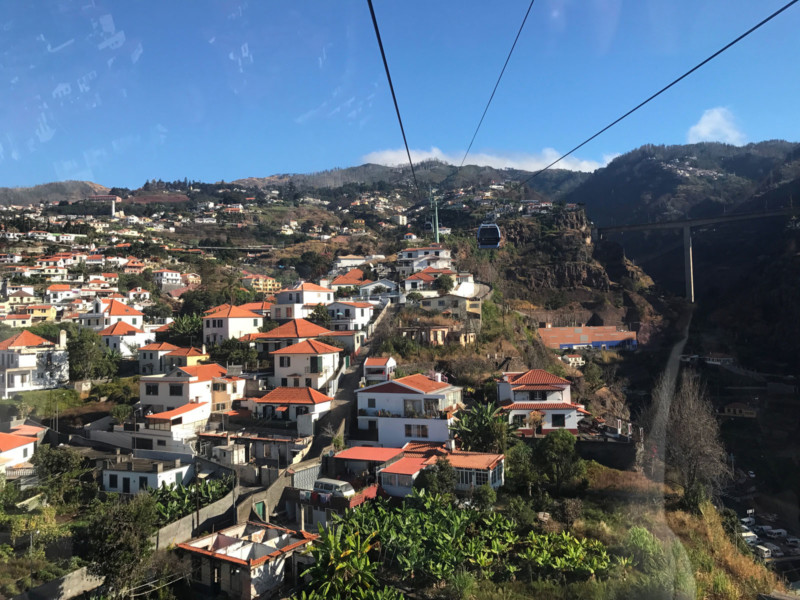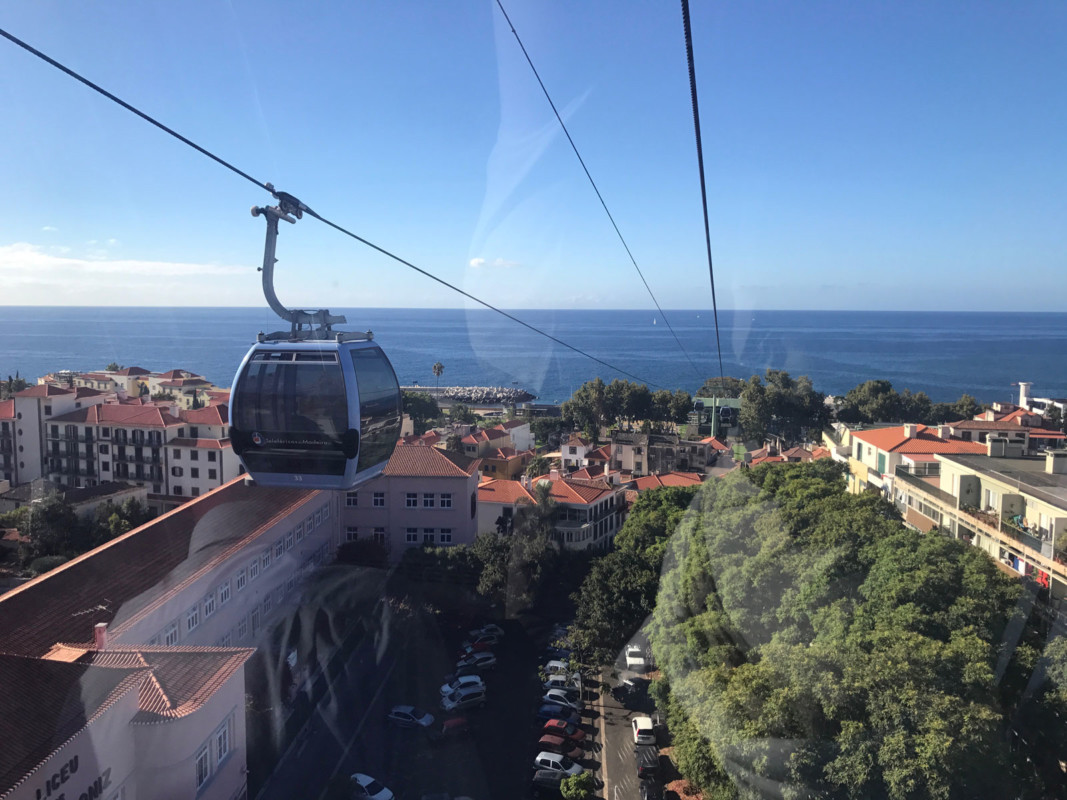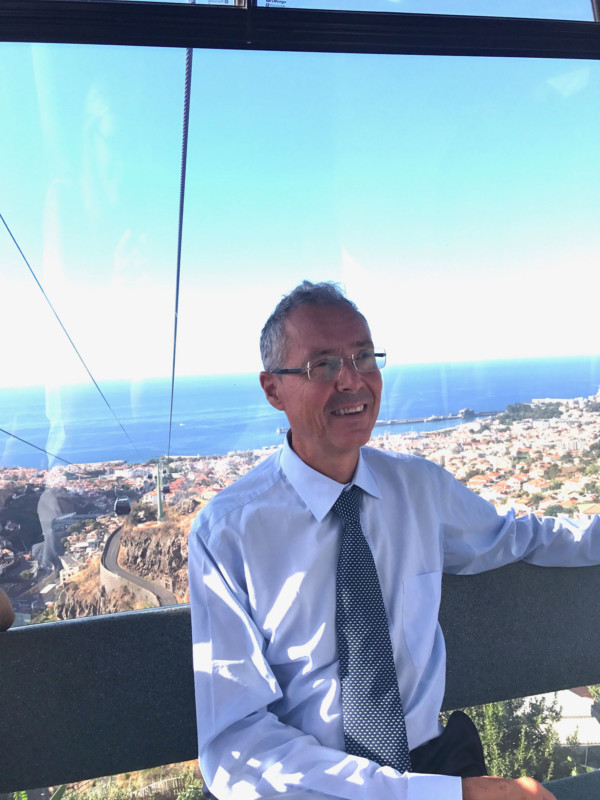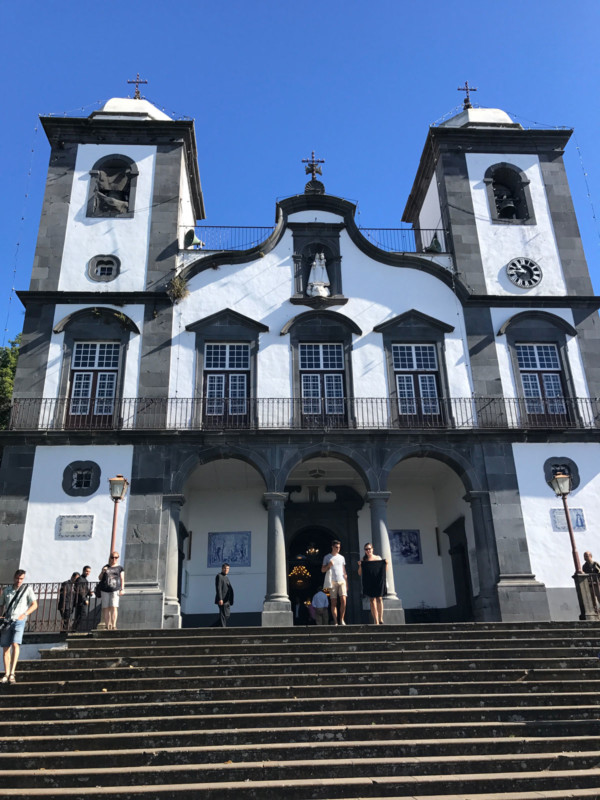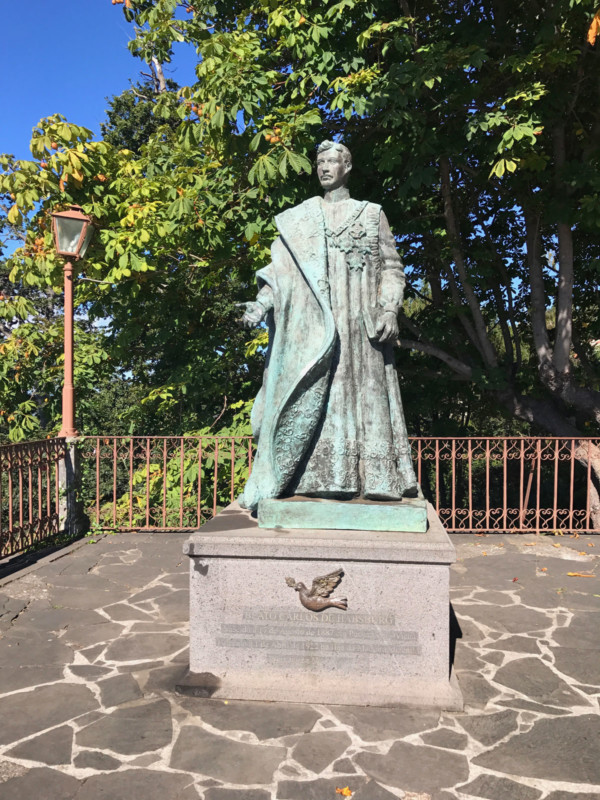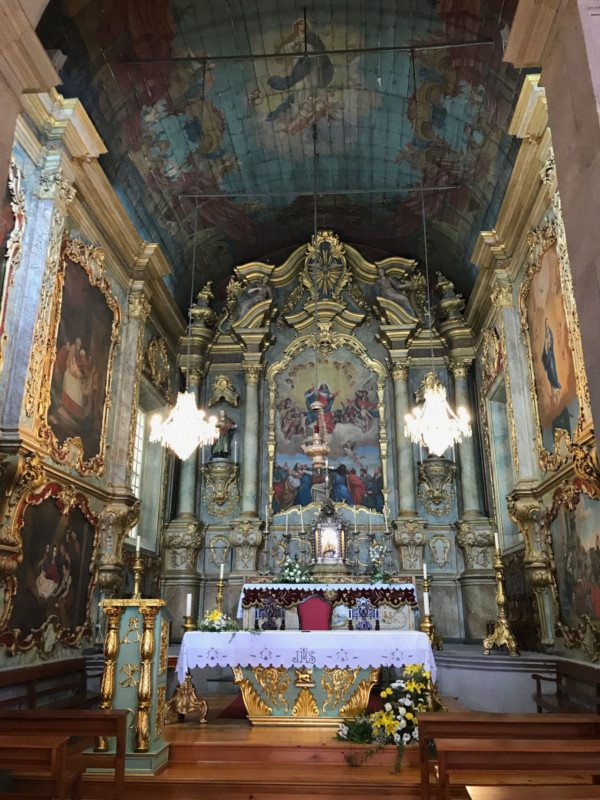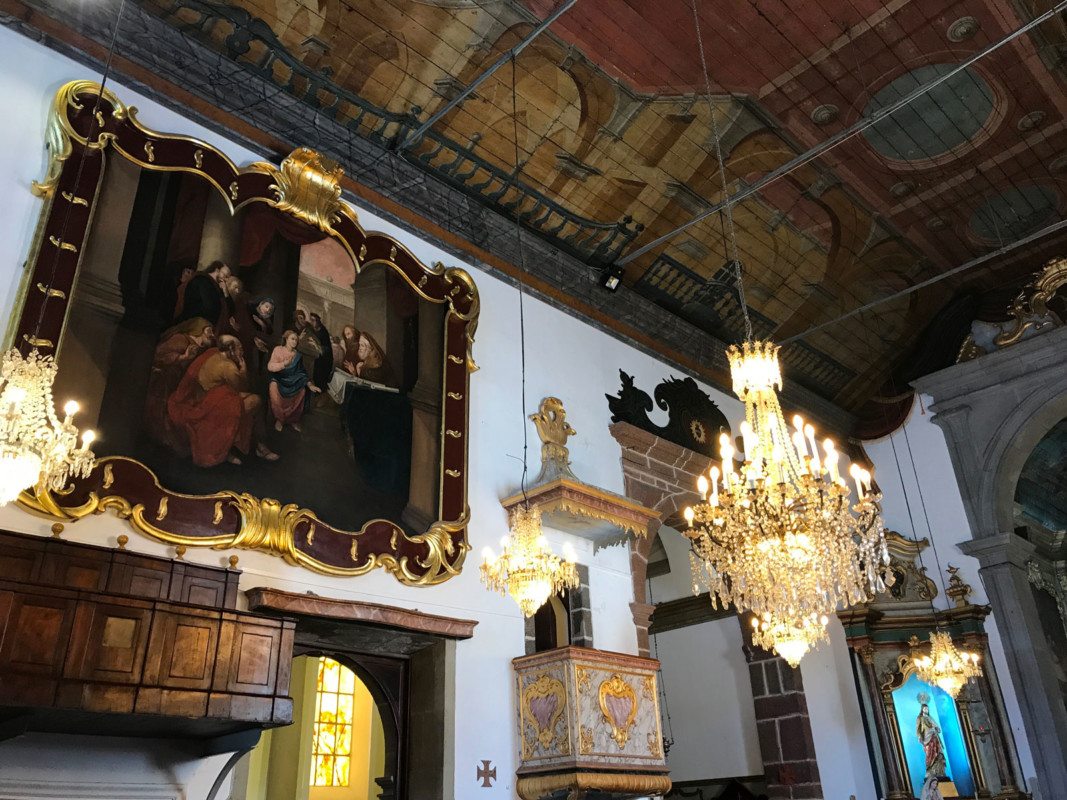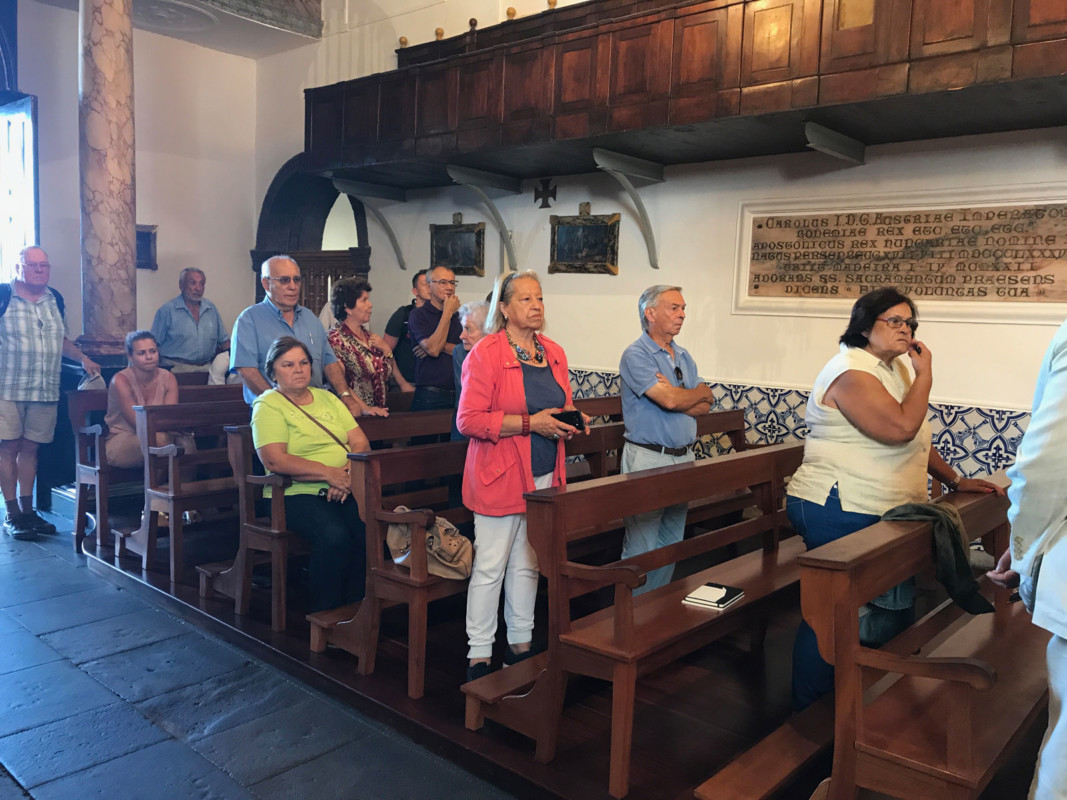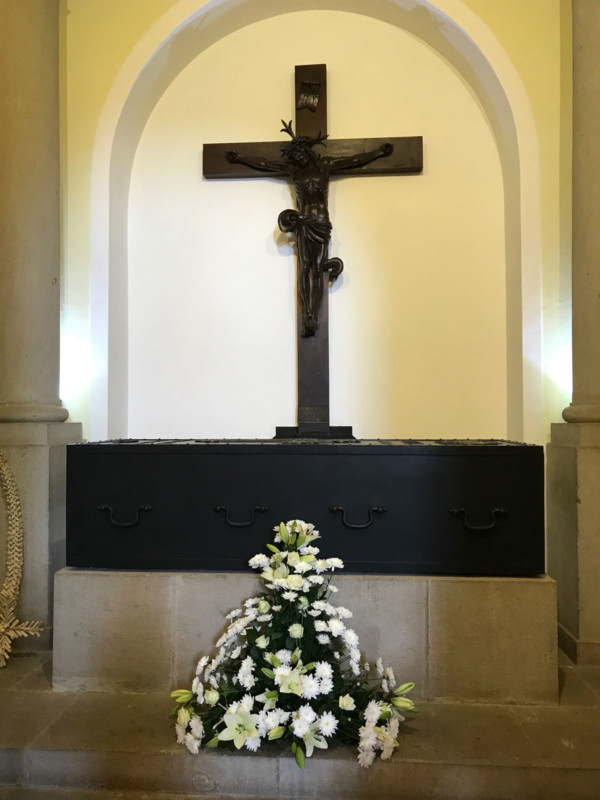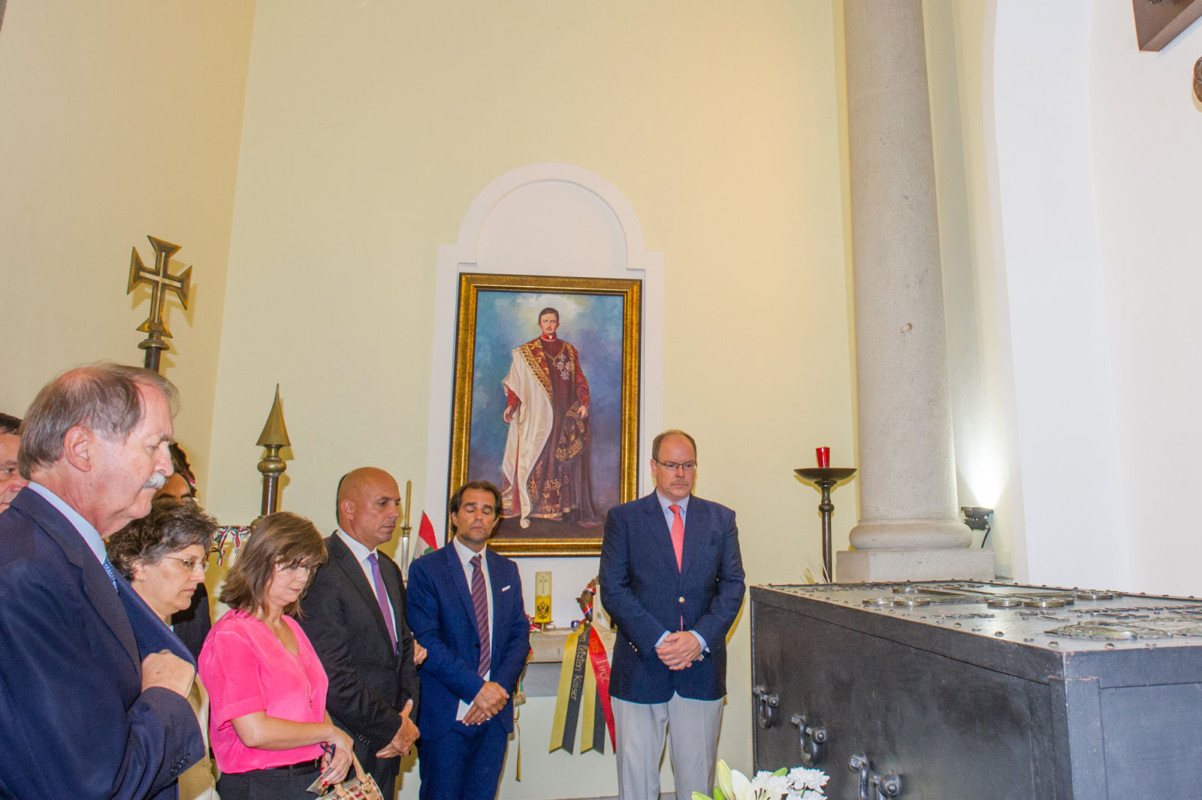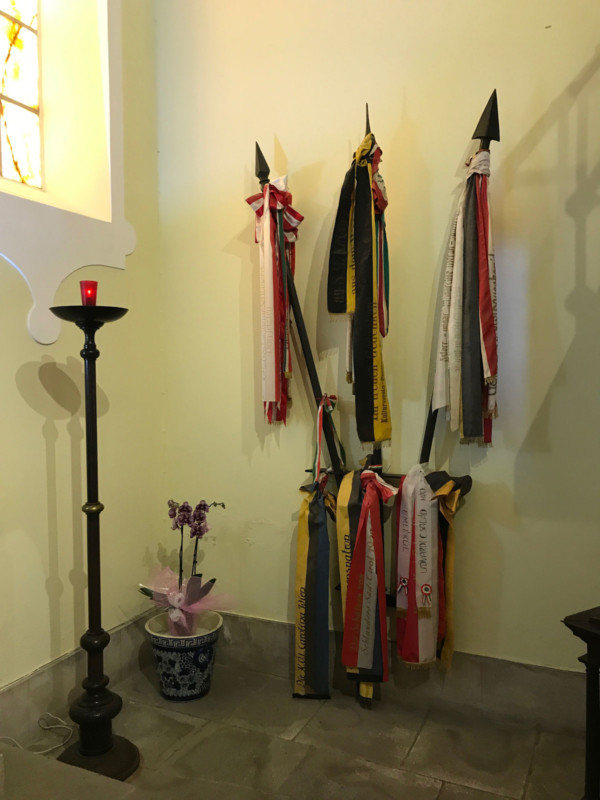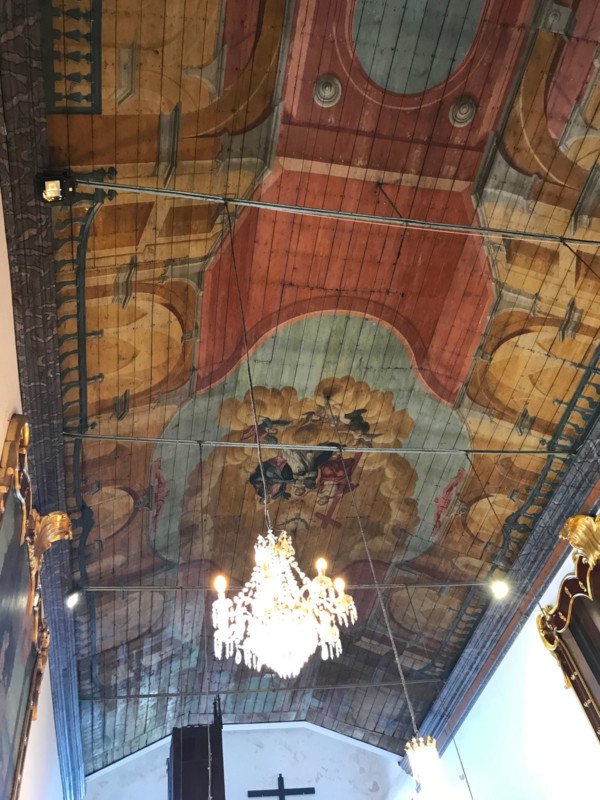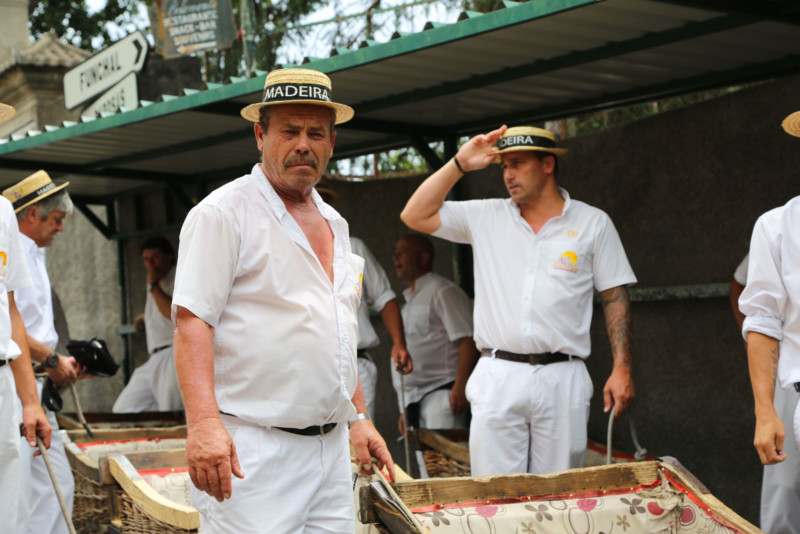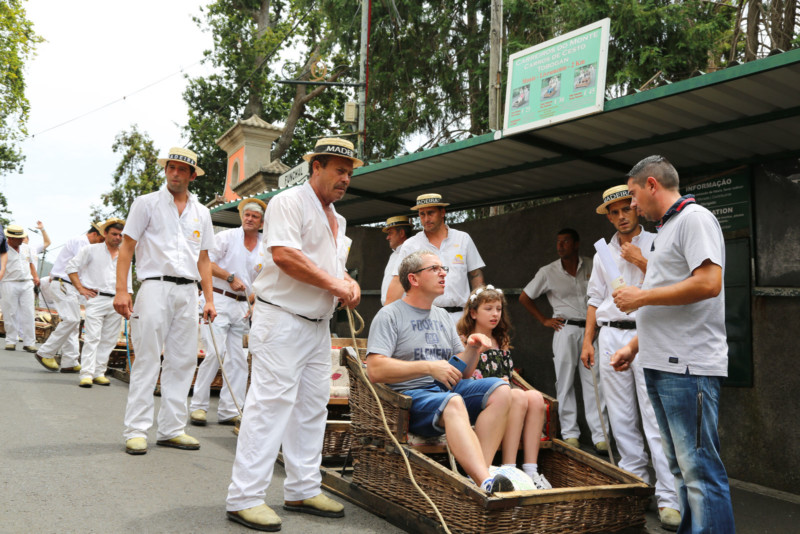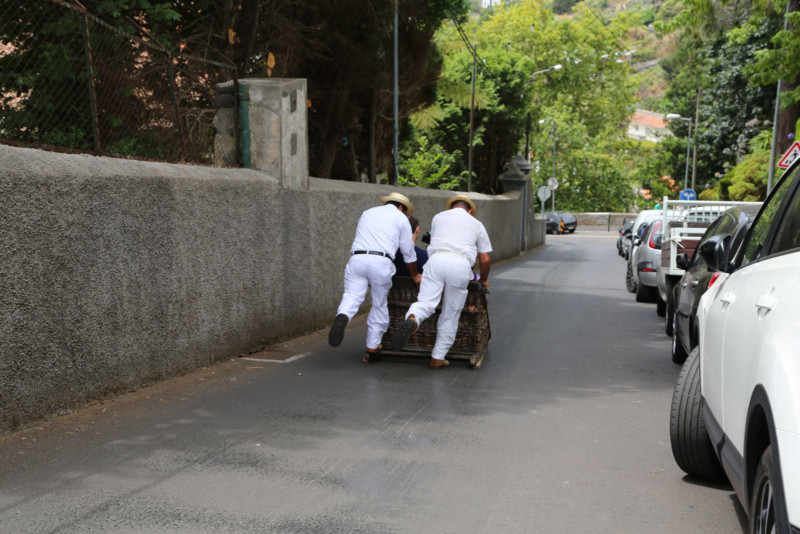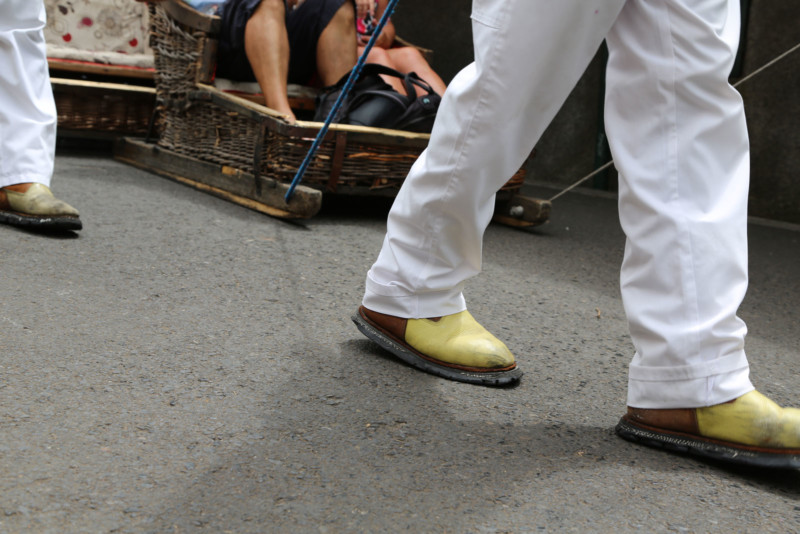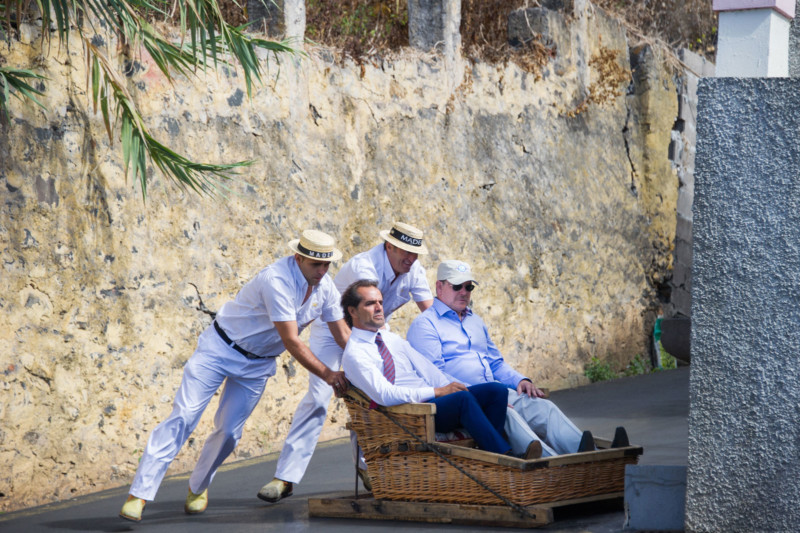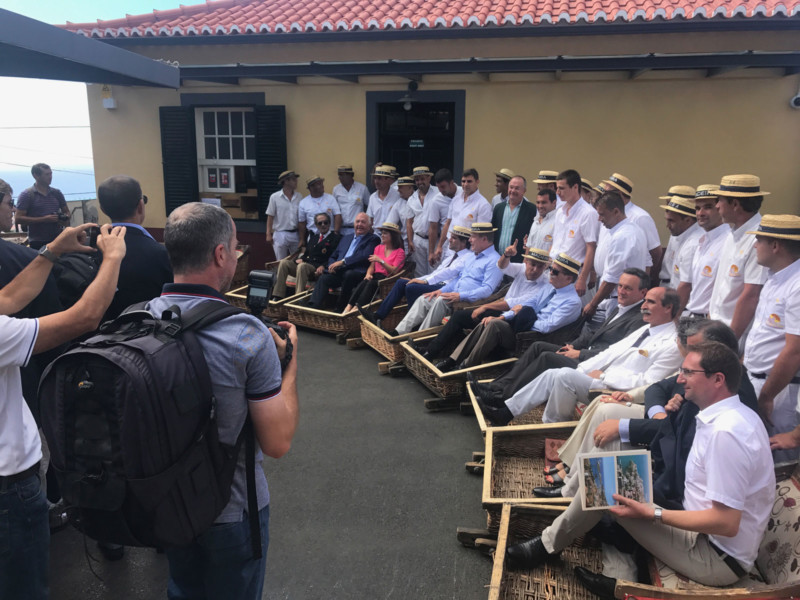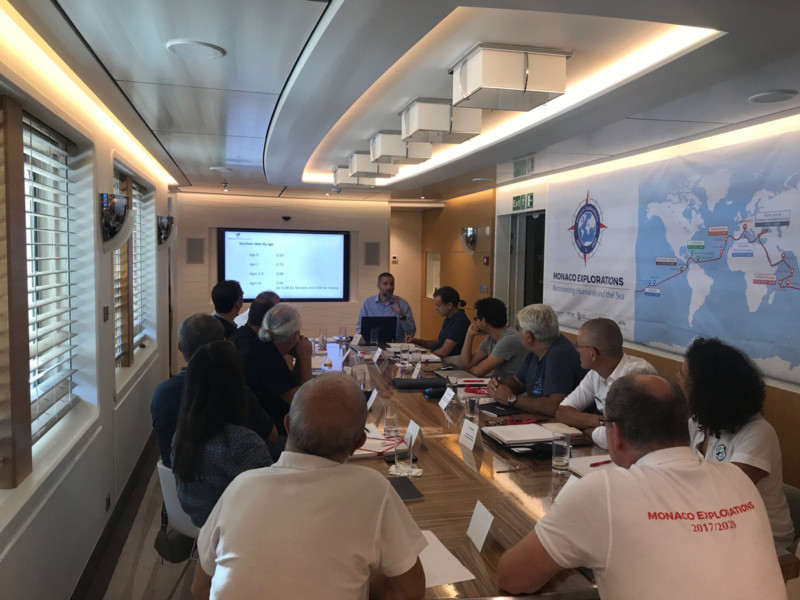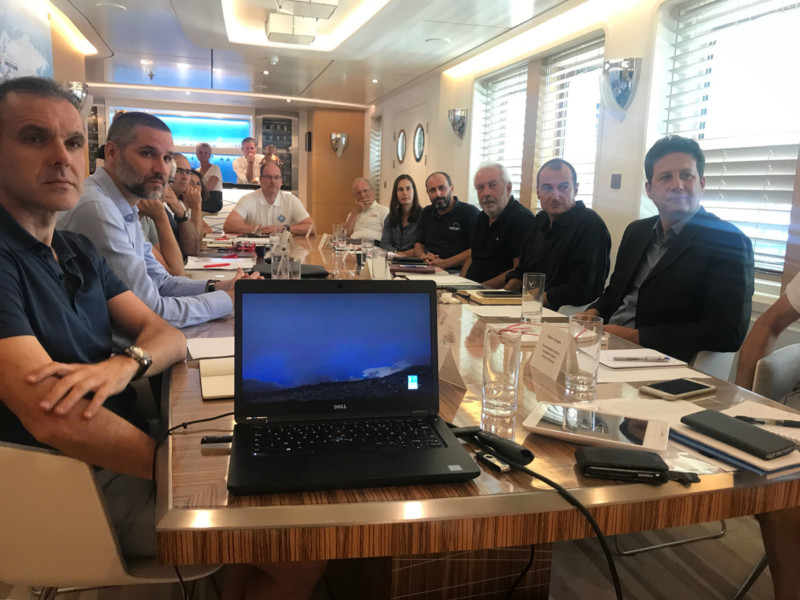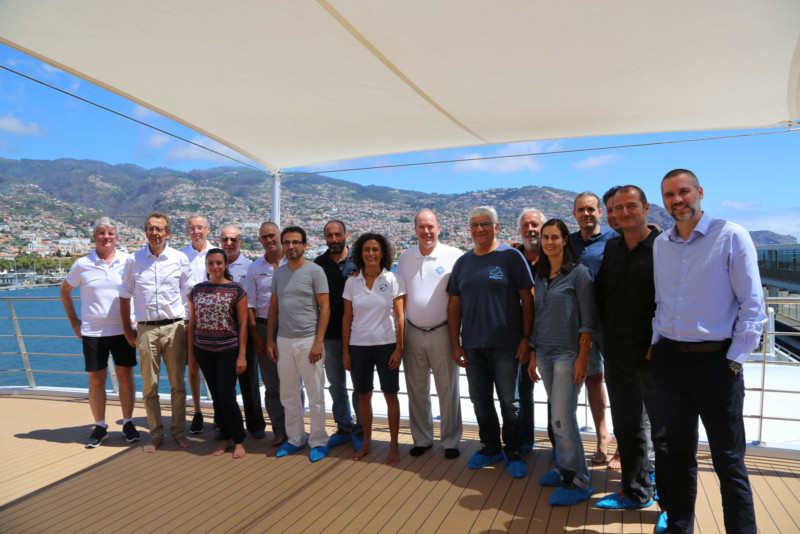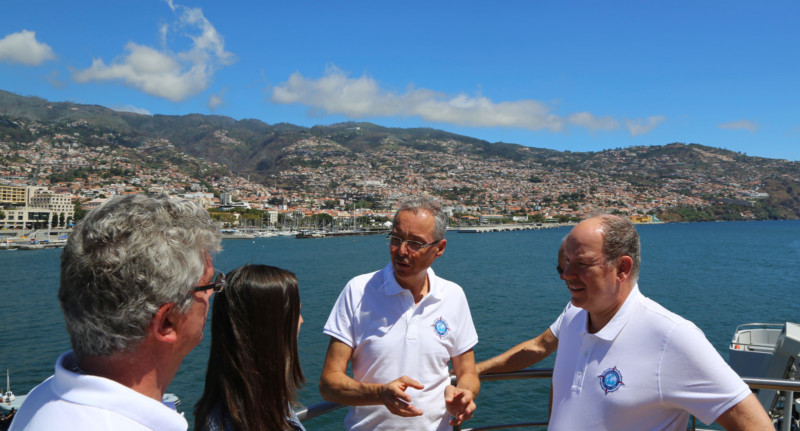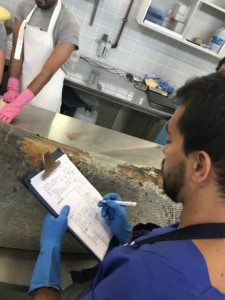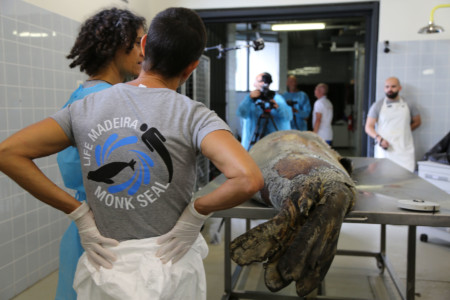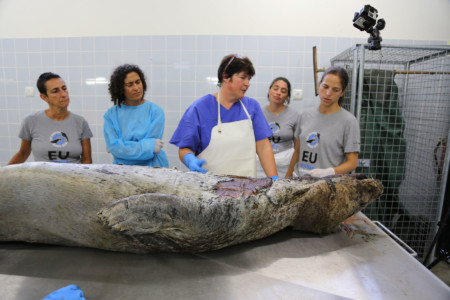[vc_row][vc_column][vc_column_text]
Morning at Sea
The sea was quite rough this morning as we made our way to the cave where the IFCN (Instituto das Florestas e Conservação de Natureza IP-RAM) has installed a camera system to monitor monk seal behavior. Madeiran President Miguel Albuquerque and local conservationist Rosa Pires invited HSH Prince Albert II to visit the cave and see firsthand the habitat of the endangered Mediterranean monk seals here in the Desertas. The Mediterranean monk seal is a species that Prince Albert, through his Foundation, has been familiar with, and working to protect, for years.
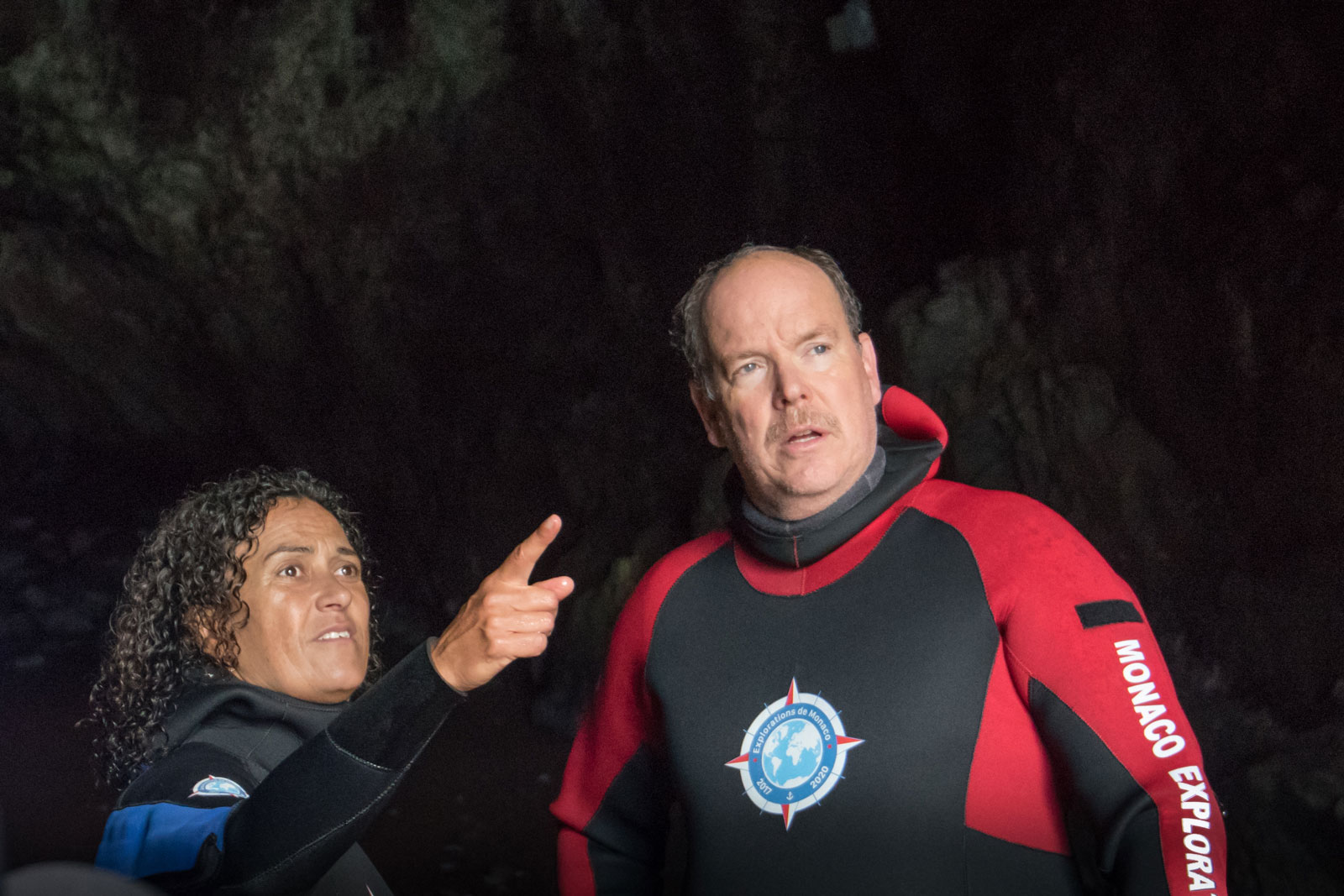
After visiting the known monk seal habitat and discussing the efforts made by IFCN and LifeMadeira to collect knowledge for further protection efforts, our group headed south on the island to calmer waters where we spent nearly an hour snorkeling and discovering the underwater flora and fauna and enjoying the immense beauty of Deserta Grande from the sea.
We returned to the Yersin to change out of our wetsuits and into our hiking gear. The tenders transported all of us to the Ranger Station on Deserta Grande where Paulo Oliveira and his team of Vigilante da Natureza (park rangers) welcomed us, and where we spent the remainder of the day.

Afternoon on Land
Prince Albert and President Albuquerque, and the rest of our delegation took a tour of the monk seal exhibition that is arranged for visitors in the rear of the ranger station, as well as the islands tiny welcome center.

Our hosts treated us to lunch featuring espetadas, which are pieces of beef skewered on bamboo and cooked over a wood fire. Delicious!

[/vc_column_text][/vc_column][/vc_row][vc_row][vc_column][gem_video video_src=”https://www.monacoexplorations.org/videos/5.m4v” image_src=”26627″][/vc_column][/vc_row][vc_row][vc_column][vc_column_text]
When lunch was finished Prince Albert took the time to look through photographs from the past when his great, great grandfather, Prince Albert I visited the same island, Deserta Grande. Head of Archives at the Palais Princier in Monaco, Thomas Fouilleron, was there to present the documents showing the history Prince Albert I had with this island and the activities and hikes he documented during his visits.
The final activity of the day was to follow in the footsteps of Prince Albert I, which was part of the reason we began our three-year journey here in the archipelago of Madeira, and begin our own hike upwards. Paulo Oliveira and HSH Prince Albert II led the hike, discussing the history of the paths and the flora and fauna that is endemic and so important to the biodiversity of the Desertas. It turned out to be a very lucky day for us, as from nearly 200 meters above the sea, we were able to spot a male monk seal in the waters below, and thankfully had professional photographers with us to capture a shot of him, allowing us to record the sighting.
[/vc_column_text][/vc_column][/vc_row]
[vc_row][vc_column][vc_column_text]Today we started out in Funchal and finished the evening watching the sunset at the Desertas Islands – not a bad way to spend the day….
We were out early this morning taking the Teleférico do Funchal (cable car) up to the hilltop town of Monte. The cable car ride offers beautiful views of Funchal and the sea. It’s hot, hot, hot inside the car but as you get closer to the top you can feel a breeze, and the views are worth withstanding the heat…
[/vc_column_text][/vc_column][/vc_row][vc_row][vc_column][gem_video video_src=”https://www.monacoexplorations.org/videos/5A.m4v” image_src=”26589″][/vc_column][/vc_row][vc_row][vc_column][vc_column_text]
On the way up to Monte from the cable car, you can spot the Igreja de Nossa Senhora do Monte (Our Lady of Monte), the Catholic Church dedicated to Madeira’s patron saint. The church is beautiful and today our visit in Monte began there. Prince Albert II wished to pay his last respects to those who tragically lost their lives when a large oak tree fell on the crowd during the annual celebration of the Feast of the Assumption on August 15th.
After visiting the church, Madeiran President Miguel Albuquerque invited our group to ride the famous Carros de Cesto (literally means ‘basket car’), which is a toboggan ride dating back to the early 19th century. The toboggans were used for carrying freight down the steep 3-mile (5k) hill from Monte to Funchal. It wasn’t long until a Monte resident realized that the same basket cars could be used to take people down the hill as well, and so was born the famous basket car ride of Madeira, which CNN has named one of the world’s coolest commutes. The ride was very exciting and it took 8 baskets to get our entire group down the hill!
Prince Albert I also took this ride when he visited Madeira in the and in this sense it was a great opportunity to follow in his footsteps. It is clear to see that the toboggans have not changed much since they were first put to use, and it really gave us the sense of stepping back in time.
[/vc_column_text][/vc_column][/vc_row][vc_row][vc_column][gem_video video_src=”https://www.monacoexplorations.org/videos/15A.m4v” image_src=”26588″][/vc_column][/vc_row][vc_row][vc_column][vc_column_text]
While we were visiting Monte, a group of monk seal researchers and experts were convening aboard the Yersin. This group spent the morning sharing their research findings and conservation actions in an effort to open lines of communication and collaboration toward a united goal. When we returned to the Yersin, Prince Albert sat down with the group and asked that each person brief him on their specific work. You can read more about the group here.
And you can watch our lucky encounter with a Mediterranean monk seal here.
After the monk seal group finished their meeting, the Yersin departed the port and headed to Desertas Islands. It was a smooth and beautiful ride, arriving at Doca just in time to see a perfect triple layer of sea, rock, and mist.
[/vc_column_text][/vc_column][/vc_row][vc_row][vc_column][gem_video video_src=”https://www.monacoexplorations.org/videos/25A.m4v” image_src=”26587″][/vc_column][/vc_row][vc_row][vc_column][vc_column_text]

After the mist cleared, we were very lucky to enjoy a beautiful sunset after a long day. Tonight we are all happy to be onboard, happy that Prince Albert is here to enjoy this mission and get involved in the many activities ongoing, and most of all – we are all ready for tomorrow’s explorations in the sea!

[/vc_column_text][/vc_column][/vc_row]
The Mediterranean monk seal (Monachus monachus) is one of the most endangered mammals in the world, with the global population being estimated at only 500 individuals living in the Mediterranean and the near Atlantic. There are two main reasons for the vulnerability of the Mediterranean monk seal: on the one hand, fishermen view the species as competition for fisheries resources and, on the other, the species has been affected by the degradation of its habitat due to urbanisation and tourism.
At the initiative of the Prince Albert II of Monaco Foundation, a meeting of Mediterranean monk seal experts has been held within the context of Monaco Explorations’ research on the Yersin vessel in Madeira
This meeting held today, should help create a solid, lasting dynamic between the different projects aimed at protecting Monachus monachus populations.
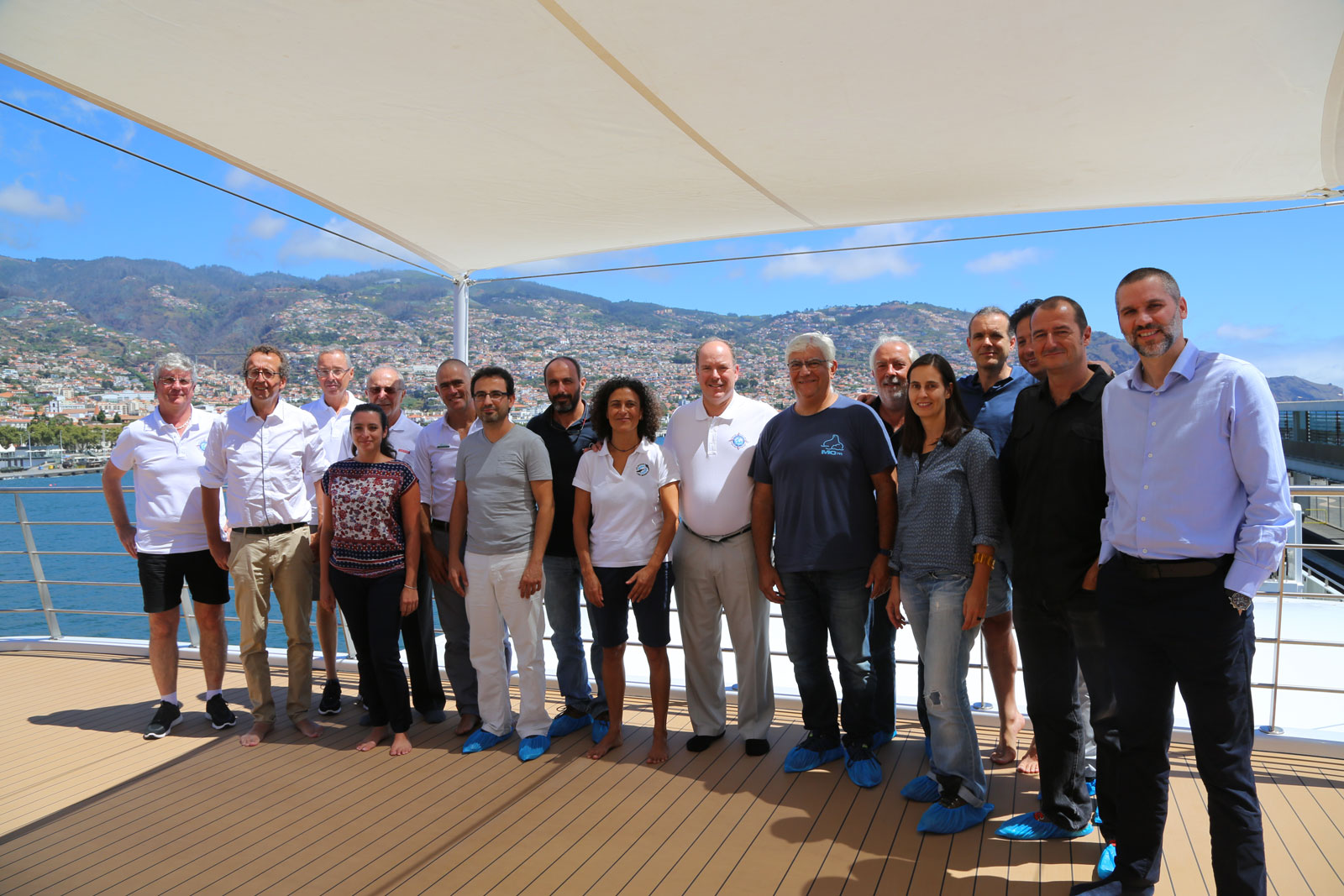
This momentum originated in Monaco around ten years ago. Following two workshops organised by the Prince Albert II of Monaco Foundation, which brought together Mediterranean monk seal experts, the Foundation ordered a feasibility study. The results of this study formed the basis of the Foundation’s commitment to the protection of this emblematic species. This is a commitment that has continued to develop in collaboration with the Tethys Research Institute, the Hellenic Society for the Study and Protection of the Monk Seal and WWF Greece. This collaboration, along with support from local communities, has allowed for the creation of a Marine Protected Area (MPA) around the Island of Gyaros, which is home to one of the largest Mediterranean monk seal colonies.
It is in keeping with this long-term work that the Prince Albert II of Monaco Foundation decided to bring together the leading Mediterranean monk seal experts on the Yersin research vessel when it stops over in Funchal on the Island of Madeira. The first objective is to review all the projects currently underway. The second is to prepare, with this group of experts, a major meeting as part of the Monaco Ocean Week 2018 programme, in which all the foundations from the Mediterranean and the near Atlantic concerned about this emblematic species will participate.
This workshop has been moderated by Paulo Oliveira, Vice-president of the Institute for Nature Conservation and Forests [Instituto das Florestas e Conservação da Natureza, IFCN]. The participants will include: Rosa Pires (Senior Technical Officer, IFCN), Luis Freitas (Head of the Science Unit at Madeira Whale Museum), Panos Dendrinos (Biologist PhD, President of the Board, MOm/Hellenic Society for the Study & Protection of the Monk Seal), Spyros Kotomatas (PhD, CYCLADES LIFE Project Leader, WWF Greece), Joan Gonzalvo (PhD, Programme Manager, Tethys Research Institute), Harun Güçlüsoy (PhD, University of Izmir, Institute of Marine Sciences and Technology), Pablo Fernández de Larrinoa (Marine Biologist, CBD-Habitat Foundation) and Philippe Gaubert (Research Fellow, Institute of Evolutionary Sciences of Montpellier).
Rosa Pires invited us to the Museu da Baleia in Caniçal, Madeira where LifeMadeira is holding a monk seal necropsy workshop. The purpose of the workshop is to teach local veterinarians to perform a successful necropsy on the monk seals. So far, when there is a deceased monk seal found here in Madeira, they must bring a veterinarian in from mainland Portugal, or even farther to perform the necropsy.
Here to perform the workshop is Ursula Siebert, Professor and Head of the Institute for Terrestrial and Aquatic Wildlife Research (ITAW) at the University of Vetrinary Medicine Hannover Foundation
By performing timely, consistent and successful necropsy, we are able to learn and understand a lot of necessary and important information about the life, health and death of a species.
